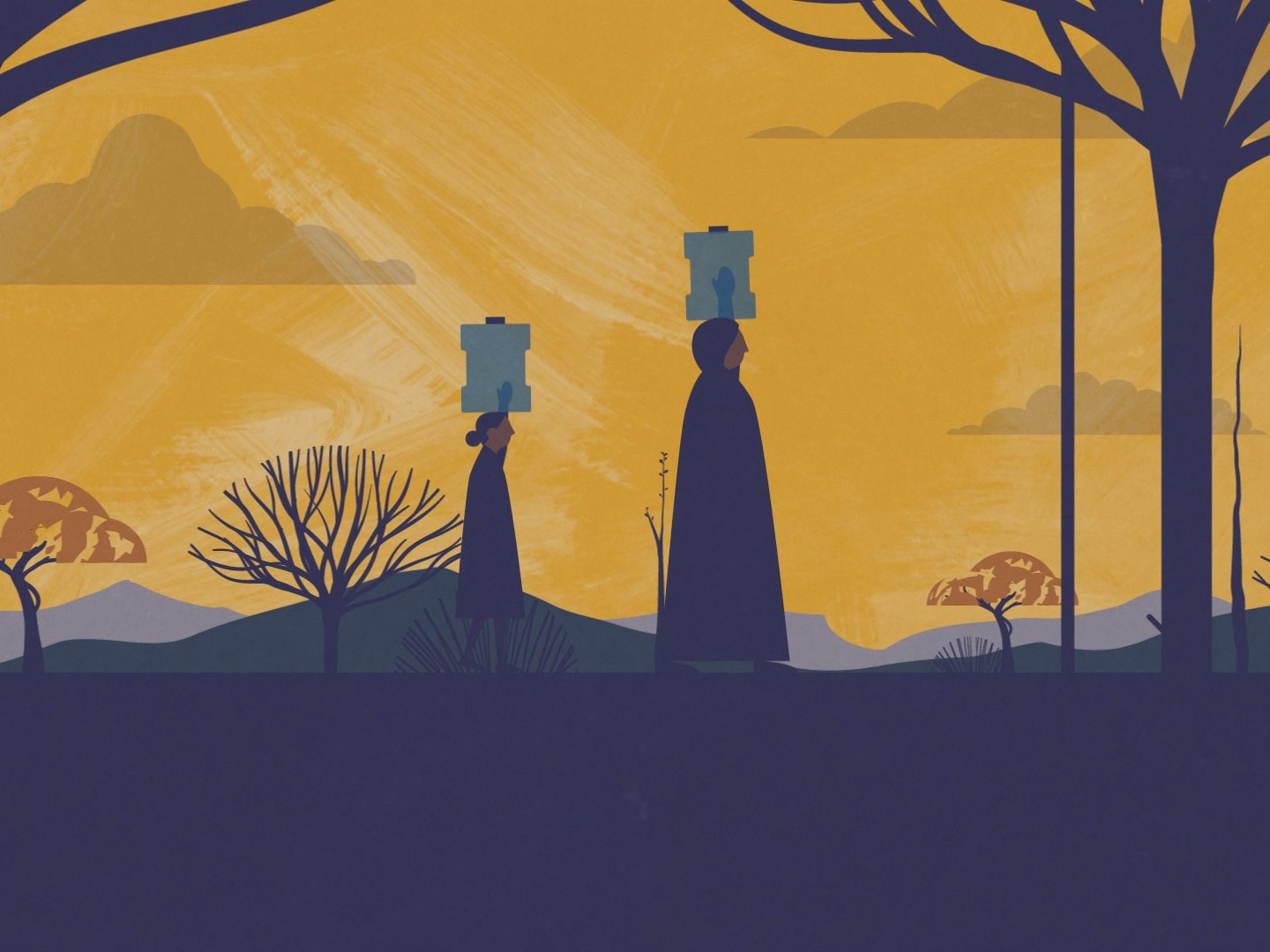A fresh approach to visual communications in development: allow me to illustrate
This blog highlights what we've learnt as we've moved away from video and photography as our principal means of communicating our impact and towards the use of animation and illustration.
2020 brought many surprises. At the beginning of the pandemic, the last thing I expected was to be coaching voice actors down a crackly line to a recording studio in Afghanistan.
My organisation, Integrity Action, was producing an animated video to showcase impact stories – this was part of our shift, over recent years, away from photography as our principal means of visual communication. The use of photography within international development has often been accused of reinforcing stereotypes and we felt illustration and animation gave us the opportunity to be more creative and engaging while respecting people’s agency. So, what have we learned?
Avoiding stereotypes
Obvious perhaps, but illustration and animation are just as capable of reinforcing stereotypes as photography and videography. For instance, the careless way harmful gender stereotypes are reinforced in this recent (hastily withdrawn) UK government COVID-19 campaign about staying home. But using animation enabled us to use some creative license in how we told these stories and gave us the freedom to reflect on how we wanted to portray people and events, while striving to ensure we did not reinforce cultural and other stereotypes.
We decided early on that using voice actors from the countries in which we work, rather than those who were imitating accents, was essential. This was one way to make the story and storytellers more authentic.
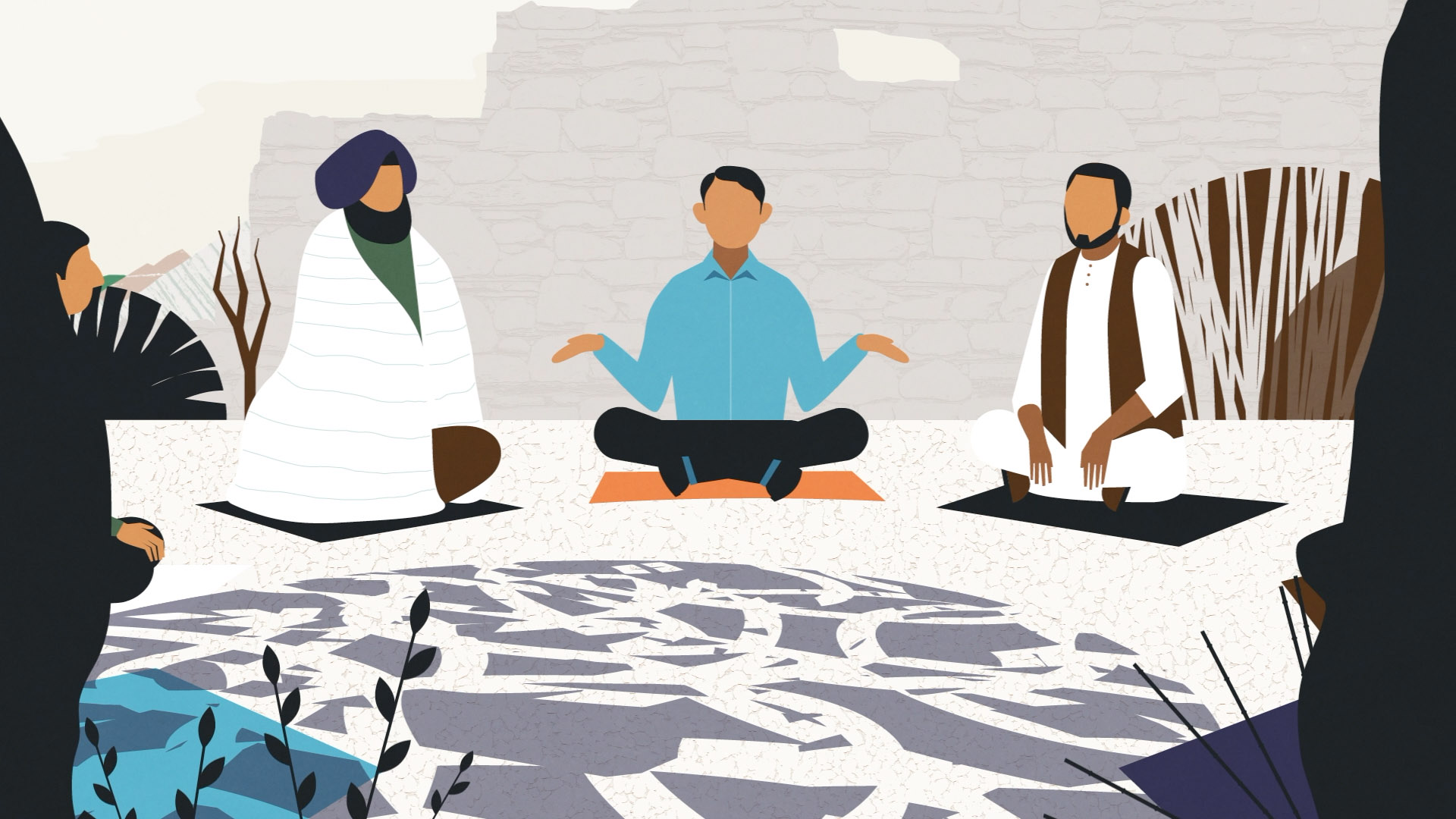 Students, teachers and school management discuss how to resolve issues identified by students in the school’s Integrity Club in Kapisa, Afghanistan. Image: Jolt Studio.
Students, teachers and school management discuss how to resolve issues identified by students in the school’s Integrity Club in Kapisa, Afghanistan. Image: Jolt Studio.
We embarked on a long, hard search for suitable voice actors in Afghanistan, and we did the same for recent animated videos telling stories from Nepal and Kenya. We tapped our networks, personal and professional, and involved partner organisations in the search. In Nepal we struggled to find a youthful voice actor but in the end the studio owner in Kathmandu acted the part for us. In Afghanistan, it was a partner staff member who took on the role of Hamid, the schoolboy in the story.
[animation temporarily removed]
Animation: Jolt Studio
In an ideal world we would use the voice of the people the story is depicting, but it can be difficult to ensure high recording quality in remote locations, and some of the people in our programmes do not speak much English. We decided to go with English narration as the majority of our target audience for these videos are English speakers, although we are aware of the complexities of communicating solely in English.
Animation: Jolt Studio
Being faithful to the story and the context
For these animations we strived to keep them as close as possible to the words of those who were being represented. The creative process started with sifting through case studies in reports and following up with partners on interesting examples. We then used participants’ words to create scripts while avoiding the use of jargon.
Throughout the process we checked and double checked with partners, even sharing draft storyboards to ensure we were not depicting anything in a misleading or culturally inappropriate or inaccurate way. For example, Uchi in Kenya acts as a community monitor, checking whether local projects and services are delivered properly and raising issues with the authorities when needed. But when she reaches an agreement with a contractor, we learned this is unlikely to happen with a handshake. Instead, the animation shows them each placing a hand on their chest and nodding, in line with local customs.
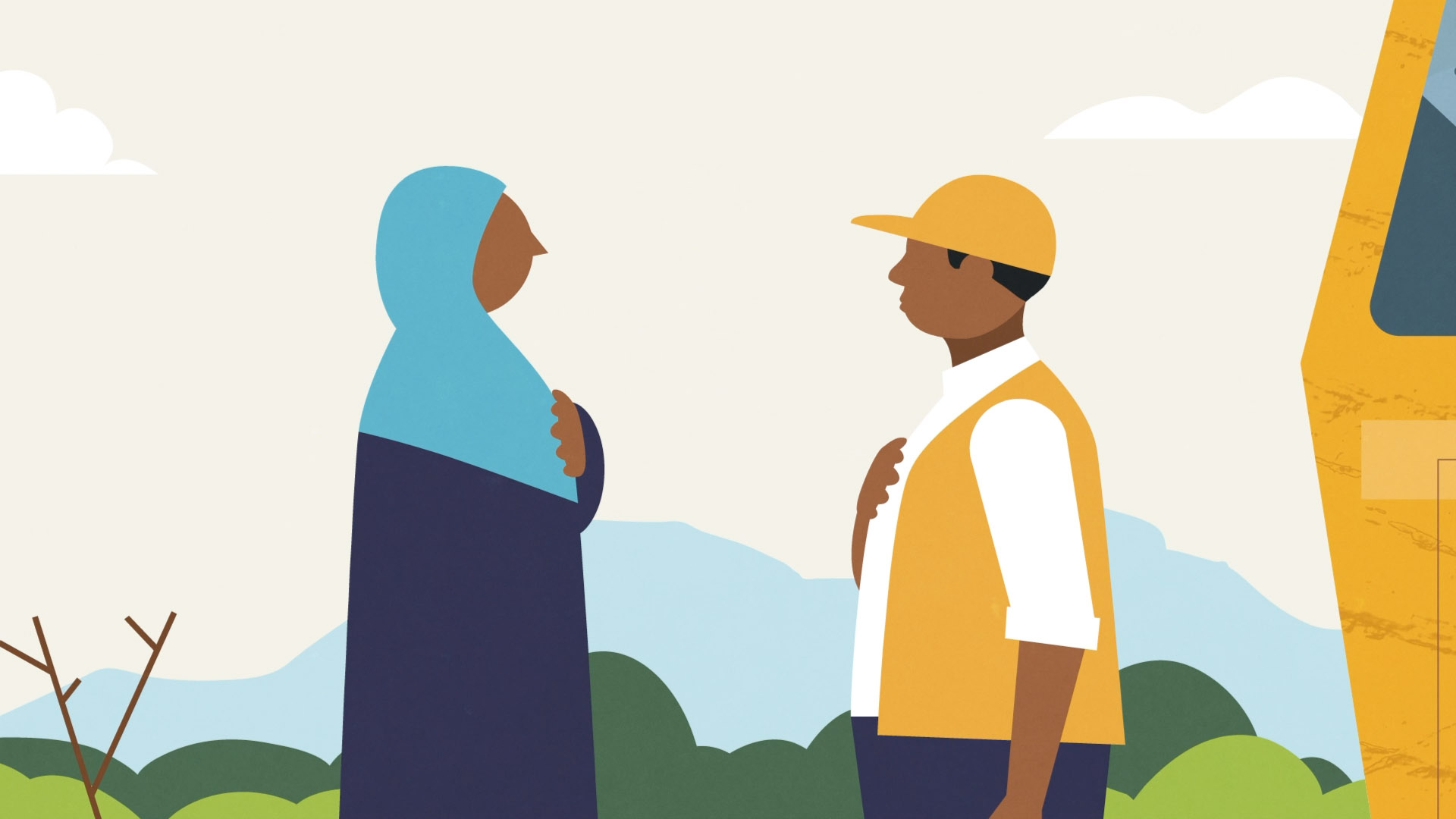
Community monitor Uchi Chindunga in Kwale, Kenya, faces a building contractor. They reach agreement on how to solve a problem Uchi has identified with a local infrastructure project, nodding and raising their hands to their chests to signal their agreement. Image: Jolt Studio
Reductionist? Or allowing creativity to flourish?
We were mindful of the risk that the people in the story could be reduced, through their portrayal as animated characters, their humanity erased. However, people can also be reduced by the way they are portrayed in a photo or video. Any medium can fail to respect people’s dignity. We tried to counter this by using people’s own words as the starting point, and developing the animation so that it complemented those words and never got in the way.
Although it may be true that an illustration cannot fully capture what is in a photo, an illustration can also enrich a story in a way that is quite distinct from photography, by adding a layer of creativity that is still faithful to the reality being depicted. Our last three annual reports have featured illustration rather than photography, and we feel that the way the illustrator rendered the people in the stories really provides an insight into each individual’s character and agency.
Mwanatumu, for example, is depicted explaining how she has been able to use our mobile app DevelopmentCheck to get local government representatives to address problems with local construction projects.
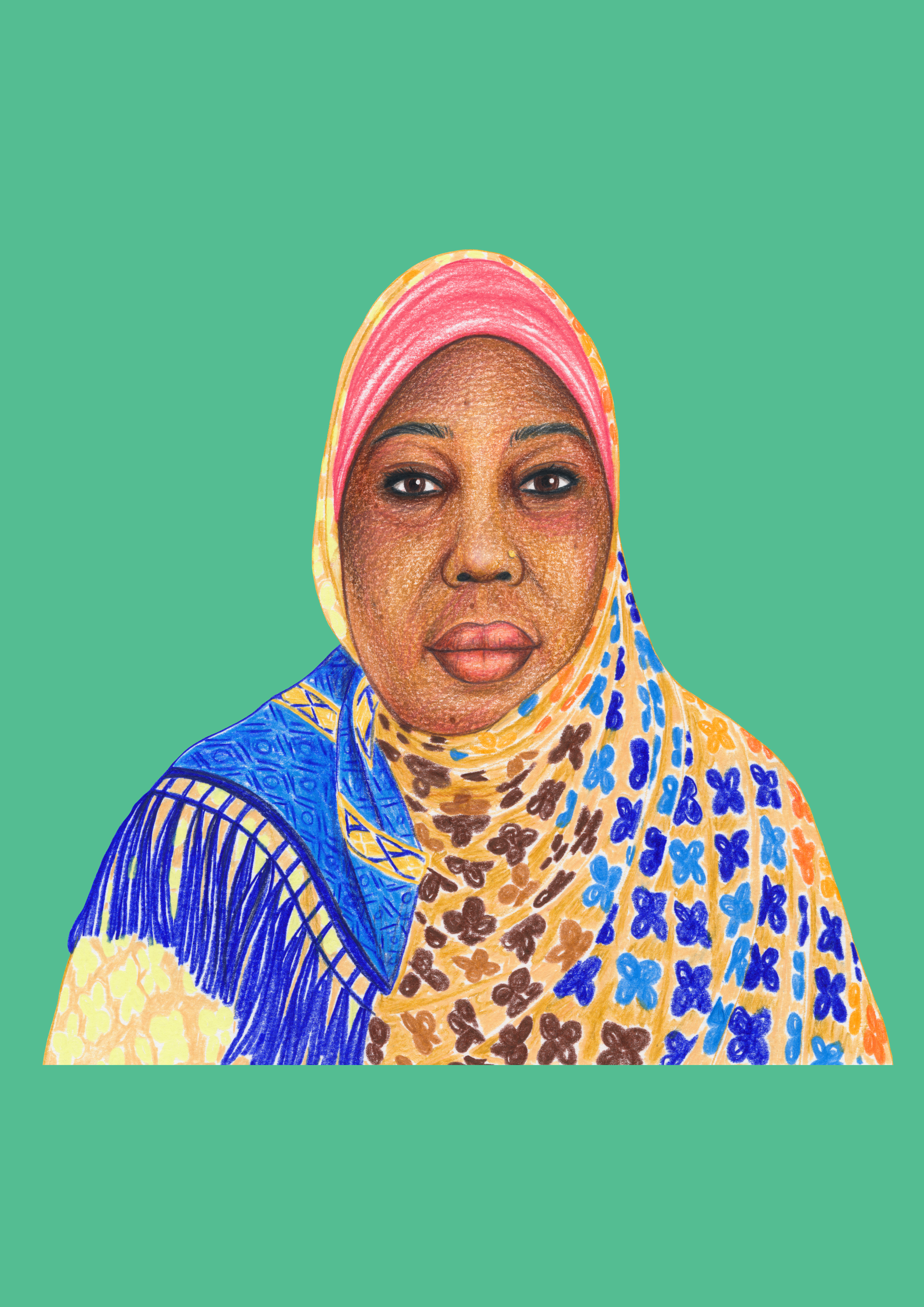
Mwanatumu Kadau is a community monitor in Kwale, Kenya. “I love being a monitor. With my support, the problems facing our community can be addressed,” says Mwanatumu. Image: Mat Williams
And in our animation telling a story from Afghanistan, this image of secondary school student Hamid – atop a mountain, silhouetted by the sun, his school in the background – makes him appear as a super hero. Sounds about right to us: he led a club of students which successfully ensured teachers actually turned up to school, when they had previously been missing lessons.
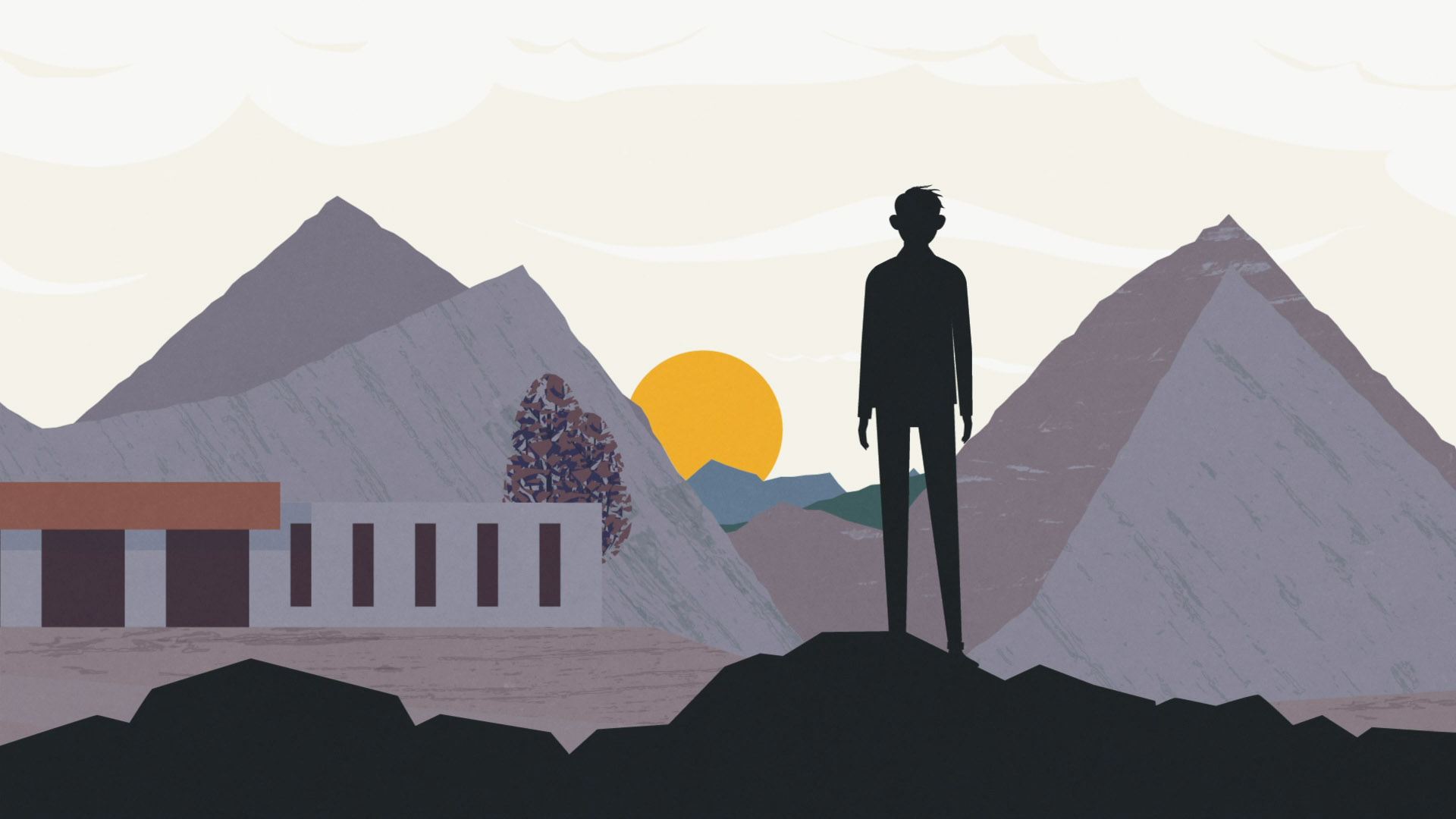
Hamid Kohistani looks out over his school at sunset. Hamid is a member of his school’s Integrity Club in Kapisa, Afghanistan. Students monitor how education is delivered and work with those responsible to get problems resolved. Image: Jolt Studio
Of course, there are other ways to approach storytelling in a creative way while using photos, such as this project which used images of the people in the stories wearing masks. We continue to explore creative techniques and media and are keen to learn from others’ experiences along the way.
Less reliance on travel
The fact that we already had this way of working in place has been very useful since the pandemic began. Because we already had a way of producing stories that didn’t rely on travel, we were able to build on it and continue to tell stories even when we could not visit the communities in which we work.
And although it varies, it can be hard to capture high quality photos and video through partner organisations – and indeed when we visit projects! It depends on having decent equipment, knowing how to use it, and having the time. So again, illustrated imagery provides a way to depict stories without reliance on high quality photographic material.
Let’s not forget some practical issues which must be considered for any production of this type.
Consent still matters
Even if we are not using photography, we need to ensure the people whose stories we are telling understand how their stories will be used, agree to it fully, and understand that they can also withdraw their consent at any time, without repercussions. Our approach to obtaining informed consent remains the same whether we are using real photos or illustrations, and our partners are trained on this, so it is an integrated part of the way we collect stories.
Animation: Jolt Studio
Cost and time investment
Although you may assume that creating an animated video is easier and cheaper than sending out a videographer to another country, it’s not quite that simple. Of course, it depends on what kind of imagery you want to use, but for high quality, dynamic imagery, creating a short animation is not necessarily cheap or quick.
Based on our experience, an animated 90-second video could cost anywhere from £5,000 to £14,000. At £5,000 you would expect something fairly basic. There is an economy of scale, so for a three-minute animation the cost wouldn’t necessarily double, neither would the cost necessarily triple if you wanted three animations instead of one. If you wanted frame-by-frame hand-drawn animation, like this, that could cost a lot more.
It also takes a lot of work as there’s the time invested in collecting the story properly, clarifying details throughout the process, and – in this case at least – the time needed to source, audition and coach voice artists, all of which I was involved in. If we did not need voice actors of a certain origin, this is something the animation studio would handle as part of their package.
So, this is not really a quick, cheap approach to impactful comms – it’s a path to choose for other reasons.
Animation: Jolt Studio
Where next?
With restrictions on travel and a pressing need to publish compelling and ethically sourced stories against a backdrop of decreasing funding in the sector, we will continue to use illustration and animation as a creative, engaging way of showing how our work impacts the lives of the people taking part in our programmes.
There’s no fool-proof solution; stories can always be misrepresented, no matter how they are told. But if we approach our communications with the knowledge that for any content we produce, we need to remain vigilant to avoid reinforcing harmful stereotypes, this can be a creative, impactful and respectful way of working.
For our next piece of commissioned imagery (to be defined) we are keen to work with a studio or illustrator based in a country or region where our work is implemented, and welcome suggestions in this regard. We’d also like to hear what you think about our illustrations and animations! Contact us on info@integrityaction.org or tweet us on @Act4Integrity
In case you’re interested, we worked with Jolt Studio on the animations and Mat Williams via Askeo for the illustrations and we would highly recommend them.
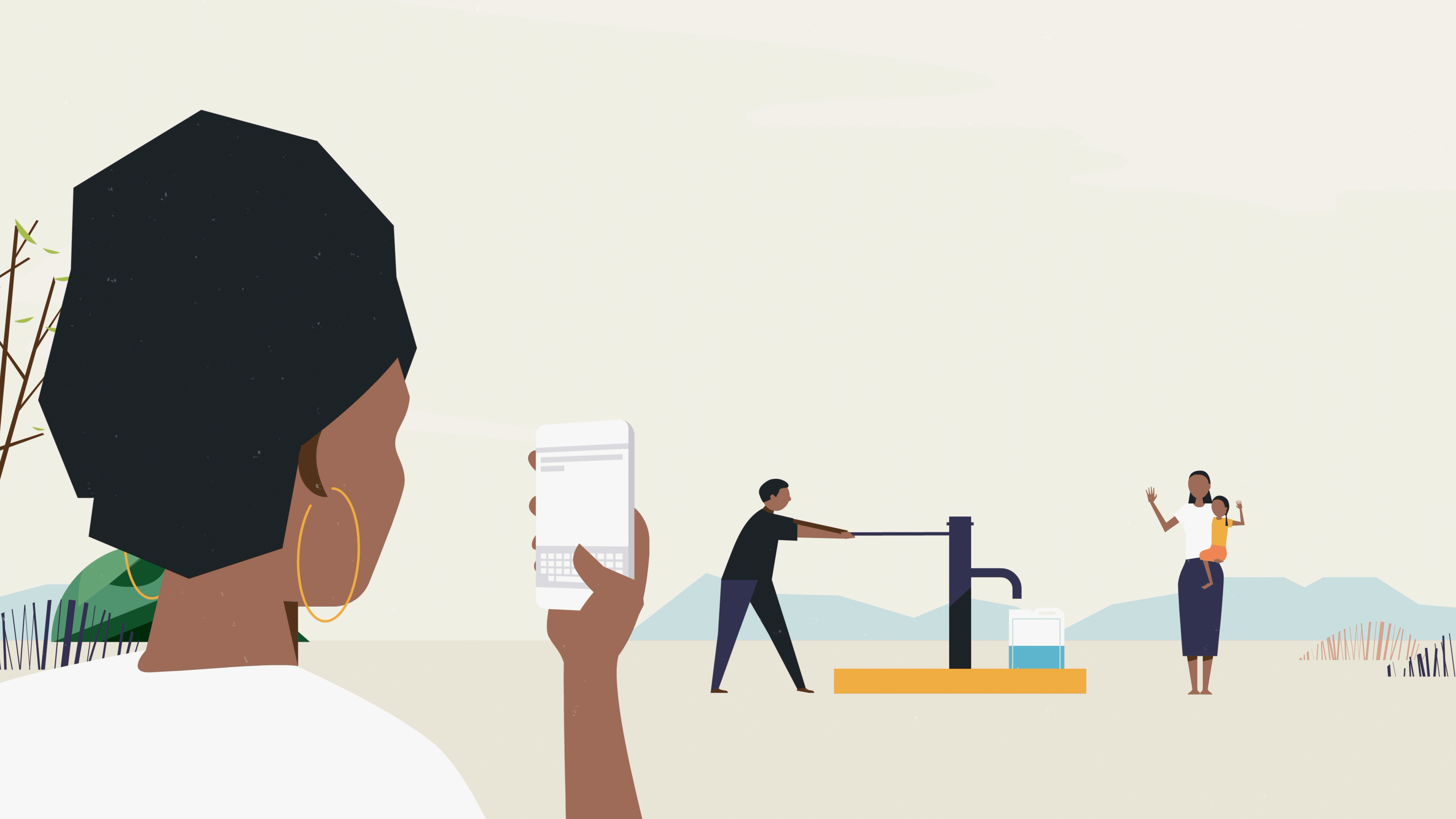 A community monitor uses the DevelopmentCheck mobile app to report that the well has been repaired. A community member is seen collecting water and a mother and child wave at the monitor. Image: Jolt Studio
A community monitor uses the DevelopmentCheck mobile app to report that the well has been repaired. A community member is seen collecting water and a mother and child wave at the monitor. Image: Jolt Studio
This piece was originally published on the Oxfam Views and Voices blog on 13 April 2021.


